The Kanchenjunga 3 High Passes Trek is an exhilarating journey through adventurous high-altitude mountain trails in the remote and wilderness Kanchenjunga region. This trek introduces you to the spectacular, untamed high-Himalayan landscapes in eastern Nepal. The formidable trekking routes during the Kanchenjunga 3 High Passes Trek encircle the world’s third-highest peak, Kanchenjunga, at 8,586 meters/28,169 feet.
The Kanchenjunga Trek is less frequented than other mainstream trekking destinations like the Everest and Annapurna regions. So, it offers a more pristine and less crowded trekking experience for adventurers. You will get to enjoy a peaceful and solitary retreat in the core of the mighty Himalayas through this trek.
The Kanchenjunga 3 High Passes Trek is 20-25 days long, depending on the particular route taken, weather conditions, transportation options, acclimatization needs, and fitness/experience/pace of each trekker. The trek usually starts from Sekhathum, and you will venture deep into the Kanchenjunga region, traversing across the pristine biodiversity of the Kanchenjunga Conservation Area. On the way, you will pass through several rural mountainside villages like Amjilassa, Gyabla, Gunsa, Khambachen, Lhonak, etc. These cultural villages are inhabited by diverse ethnic groups of Rai, Limbu, and Sherpa with their own unique customs, religions, and traditions.
The highest point of the trek is 5,140 meters at Kanchenjunga Base Camp. During the journey, you will traverse diverse breathtaking landscapes such as forests, hills, valleys, farmlands, rivers, waterfalls, meadows, glaciers, and snow-clad mountains. The stunning backdrop of Mount Kanchenjunga, Jannu, Kabru, Rathong, Tent Peak, Talung, Yalung Kang, and numerous other surrounding peaks will accompany you from start to end. The journey continues, enjoining the cultural teahouse accommodations along the trekking trails and tented camps in the more remote, uninhabited locations.
The Kanchenjunga Three Passes Trek is a perfect mix of gratifying mountain vistas, rich cultural encounters, and demanding high mountain passes. It is a rewarding treat for nature lovers, culture explorers, and adventure enthusiasts. The focal point of this trek is the navigation of three challenging high passes in the Kanchenjunga region. Each of these passes provides jaw-dropping sweeping vistas of the towering mountains and a profound sense of accomplishment to the trekkers.
Sinion La Pass
Sinion La Pass is at an elevation of 4,440 meters/14,567 feet at the border between the Nepal Himalayas and the Tibetan Plateau. It is a challenging high mountain pass on the Kanchenjunga trekking trails. This pass falls within the Kanchenjunga Conservation Area and offers you deeper insights into the rich natural splendor and cultural heritage of the region. The way to the pass is marked by colorful prayer flags fluttering in the mountain breeze and historical Buddhist Monasteries and Mani Walls.
To scale and cross Sinion La Pass, you have to navigate demanding trails. The paths leading to this pass are narrow and steep with ice and rock sections. Moreover, the high-altitude conditions of low oxygen levels and unpredictable weather can pose significant challenges in traversing the pass. However, the mind-blowing views of the Kanchenjunga range and numerous adjoining mountains make every step worth the effort.
Mirgin La Pass
Mirgin La Pass is another notable high Himalayan pass in the Kanchenjunga trekking trail, situated between the Ghunsa Valley and the Yangma Valley. It rises at a breathtaking elevation of 4,480 meters/14,698 feet. This pass is usually encountered while trekking towards the Yangma and Oktang villages as well as to the Kanchenjunga Base Camp from the north.
The climb to this pass involves traversing steep rocky terrains with some segments of ice and snow slopes. From the top of this pass, you can relish the 360-degree panoramic views of valleys, glaciers, and mountains in the Kanchenjunga region. With the magical views of the Himalayas on the backdrop, gradually descend to the other side of the pass and continue on your adventure Kanchenjunga trekking journey.
The successful navigation of Mirgin La Pass is a test of physical endurance and mental determination. It is a way of challenging yourself and proving that you have the guts to push your limits and achieve triumph. Besides, the pass lets you connect deeply to the pristine and rugged beauty of the Himalayas and Himalayan surroundings.
Sinelapche Bhanjyang
Sinelapche Bhanjyang/Sinelapche Pass is one of the three high passes in the Kanchenjunga Trek. It is at an elevation of 4,646 meters/15,242 feet above sea level. This pass is on the northern side of the Kanchenjunga Trek, situated between Ghunsa and Pang Pema villages. You will generally cross the Sinelapche Pass during the adventurous Kanchenjunga Circuit Trek while heading towards Pang Pema village.
The navigation of Sinelapche Pass is demanding, with alpine mountain trails and segments of steep snow and ice. While the journey is tough, it is equally enriching and rewarding. The significant point of Sinelapche Bhanjyang during the Kanchenjunga Trek will treat you with a spectacular expanse of the glorious Himalayas and an unmatched sense of victory and achievement. The sweeping views of the Kanchenjunga massif and other towering peaks, stunning Kanchenjunga region landscapes, and vast glaciers as far as the eye can see will leave you awestruck.
How Difficult is it to Cross 3 High Pass in Kanchenjunga Trek?
The 3 high passes in Kanchenjunga Trek are strenuous and physically demanding to navigate. Traversing all three passes involves several days of long hours of trekking in a high-altitude environment. The trail to these passes winds through rugged mountainous terrains with some sections of steep ascents and descents, rocky boulders, snow and ice slopes, etc. While no technical skills are required to cross the pass, you need to have a reasonable level of physical fitness and proper endurance capacity to deal with and overcome their tricky and tough trails. Additionally, having prior high-altitude trekking experience is a plus point.
Altitude is a difficulty factor during the three passes crossing in the Kanchenjunga region. All these passes are above 4,400 meters, and altitude sickness is a possible challenge. Well-hydration and acclimatization are essential to prevent the likelihood of altitude sickness. Besides, unpredictable alpine weather conditions, remoteness of the region, and limited availability of services and facilities along the route also add challenges to the Kanchenjunga three high pass trek.
To sum up, the Kanchenjunga High Passes Trek is a challenging adventure involving multiple Himalayan passes, so you need to have a proper physique and good health conditions. Plus, proper acclimatization by allowing enough time for the body to adapt to the lower oxygen levels of the higher altitude reached during the journey is essential. This challenging trek, which takes place in the secluded Himalayan region, is best to go with a licensed and experienced trekking guide through a registered trekking agency.
We will help you arrange permits and other required logistics, which are necessary for easy, smooth, and continent travel. We will ensure your safety and comfortness while having an unforgettable adventure in the mountains.
Best Time to Trek Kanchenjunga Three High Passes
Autumn (September to November) and Spring (March to May) are the ideal seasons to conquer 3 high pass in Kanchenjunga Trek. During these seasons, the weather is on the favorable side, providing optimal conditions for high-altitude outdoor adventures.
The temperature in the spring and autumn seasons is mild. Moderate temperatures will allow you to trek freely without the feeling of discomfort through excessive heat or cold. Likewise, the weather at this time is stable, dry, and pleasant. The extreme climatic conditions, such as heavy rainfall, thick snowfall, blizzards, high winds, thunderstorms, etc, are considerably reduced during this period. As a result, there is no threat of weather-related challenges such as floods, landslides, wind damage, etc. The trekking trails are clean and well-defined, allowing for easy and comfortable walks in the rugged mountainous locations.
The sky in autumn and spring is clear and deep blue with bright sunshine. There is less likelihood of cloud cover or dark rain clouds looming in the sky. And the atmosphere is clean and fresh, with no hazes or dust. Such an environmental condition will enhance visibility and allow for the sharp and thorough observation of the surrounding beauty and scenery. You can catch the stark panorama of the astounding mountain peaks unobscured by the clouds and hazes while crossing the three high passes. This will fascinate and enrich your adventurous endeavor of navigating three high passes during the Kanchenjunga Trek.


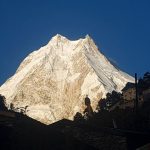 Wednesday, December 31st, 2025
Wednesday, December 31st, 2025
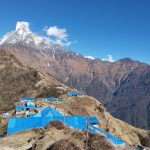 Thursday, November 27th, 2025
Thursday, November 27th, 2025
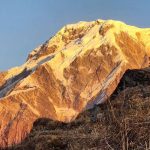 Wednesday, November 26th, 2025
Wednesday, November 26th, 2025
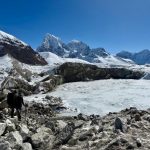 Friday, November 21st, 2025
Friday, November 21st, 2025
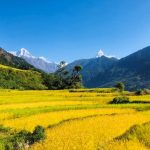 Saturday, October 18th, 2025
Saturday, October 18th, 2025
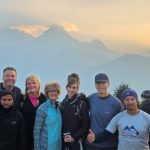 Friday, October 17th, 2025
Friday, October 17th, 2025
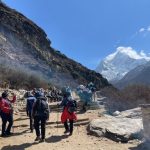 Tuesday, September 2nd, 2025
Tuesday, September 2nd, 2025
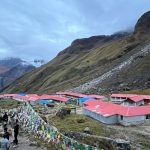 Thursday, July 17th, 2025
Thursday, July 17th, 2025
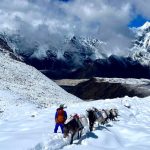 Wednesday, August 20th, 2025
Wednesday, August 20th, 2025
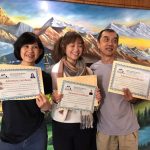 Tuesday, August 5th, 2025
Tuesday, August 5th, 2025
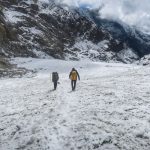 Wednesday, August 6th, 2025
Wednesday, August 6th, 2025
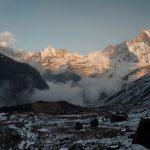 Wednesday, August 20th, 2025
Wednesday, August 20th, 2025
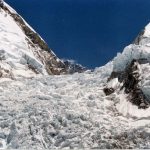 Wednesday, August 27th, 2025
Wednesday, August 27th, 2025
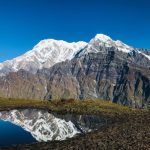 Saturday, August 30th, 2025
Saturday, August 30th, 2025
